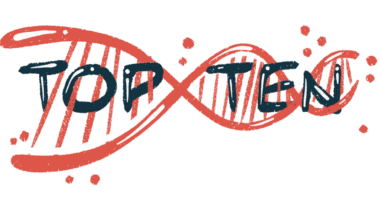#AANAM – Presenter Compares Features of DM1 and DM2

Editor’s note: The Muscular Dystrophy News Today team is providing in-depth coverage of the 2021 Virtual AAN Annual Meeting, April 17–22. Go here to read the latest stories from the conference.
People with myotonic dystrophy type 2 (DM2) tend to be older at symptom onset than those with myotonic dystrophy type 1 (DM1), new research shows.
The findings also suggest that sensory neuropathy symptoms (numbness and tingling in the extremities) and myalgia — muscle pain — are more common in people with DM2, whereas heart-related symptoms are more frequent in DM1.
DM1 and DM2 are both types of myotonic dystrophy — the most common type of late-developing muscular dystrophy — caused by different genetic mutations. While DM1 and DM2 share many clinical features, they also show differences. However, few studies have directly compared how the two diseases typically manifest.
In a presentation at the 2021 of the American Academy of Neurology Annual Meeting , Mailin Oliva, a medical student at the University of Florida, presented data comparing DM1 and DM2 patients who were seen at Florida’s adult neurology clinic between 1995 and 2017. Oliva’s poster was titled “Clinical and electrophysiological features in a large cohort of myotonic dystrophy patients.”
“Our objective was to explore differences in feature prevalence, or lack thereof, within a single large cohort [group] of patients,” Oliva said.
In total, the researchers identified data for 164 people with myotonic dystrophy — 143 with DM1 and 21 with DM2. Various clinical features between the two diseases were compared.
On average, symptoms started earlier in people with DM1 than DM2 (24.9 vs. 49.9 years old).
In both types, the most common presenting symptoms were muscle weakness and myotonia (impaired muscle relaxation). Similar to myotonia, myalgia also was the presenting manifestation in two participants with DM2.
In contrast, myalgia was not a presenting symptom in those with DM1, which is indicative that myalgia “can suggest a type 2 myotonic dystrophy diagnosis,” Oliva said.
Heart symptoms were found in 41 (28.7%) individuals with DM1, but in none of those with DM2.
Patients with DM2 were significantly more likely to have sensory neuropathy symptoms (33.3% vs. 11.9%) and myalgia (71.4% vs. 44.1%). Hormone abnormalities and cataracts (when the lens of the eye becomes cloudy) also were more common among DM2 patients than DM1 patients.
Other symptoms assessed generally occurred at similar frequencies in the two diseases. Across both conditions, about half of patients had evidence of decreased respiratory function, a finding that “emphasizes respiratory function as a key component of disease course monitoring,” Oliva said.
Comparisons of patients’ strength scores also revealed differences: individuals with DM1 generally had more decreased distal strength — in parts of the limbs far from the trunk of the body — while those with DM2 had more decreased proximal strength (in parts of the limbs close to the body’s trunk).
“This review of a large myotonic dystrophy patient cohort provides a closer look at how the features of type 1 and type 2 myotonic dystrophy patients align, and how they differ,” Oliva concluded.
“Incorporating these findings to what we know from current literature strengthens our understanding of the [myotonic dystrophy] presentation,” Oliva added.






